Now, By Memory Inspired
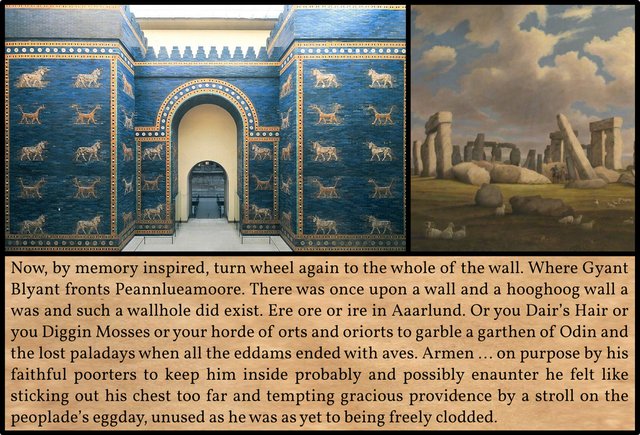
The last ten pages of Chapter 3 of James Joyce’s Finnegans Wake comprise an episode known as The Battery at the Gate. This paragraph concludes Camelback Excesses (RFW 054.16–055.40), the second of the three subsections into which the Battery can be divided. An embattled HCE is placed under house arrest.
First-Draft Version
This paragraph, which takes up half a page in The Restored Finnegans Wake, began life as a single sentence, describing the incarceration of HCE for his own safety―an idea that will be elaborated in the following chapter:
First, there was a gateway for the suroptimist had bought and enlarged that shack to grow old & happy in and when everything was got up for the purpose he put a gate on the place and the gate was locked to keep HCE in, in case he felt like tempting providence. ―Hayman 74
In subsequent drafts the shack is identified―I think―with the outhouse behind HCE’s tavern:
in loo thereof In Ireland loo is still a common name for a lavatory or WC.
if he strikes a lousaforitch It is commonly believed that lighting a match in the WC can mask the smell of faeces. A lucifer is a self-igniting match.
the iron gape ... was triplepatlockt on him Remember how we had to apply to the janitrix, the Mistress Kathe for her passkey to the locked Museyroom. As John Gordon notes, the outhouse in Finnegans Wake is often locked. See, for example, RFW 404.04–31, which has many points in common with the present paragraph. triplepatlockt alludes to the trio of HCE’s enemies: Shem, Shaun & the Oedipal Figure. There is clearly an allusion here to The Tripartite Life of St Patrick. There may also be an allusion to the Norse trickster god Loki―Valhalla, Odin and the Eddas are mentioned a few lines above.
the jags In Dublin, jacks is the common form of jakes, English slang for toilet or WC.
The Soroptimist International is a women’s volunteer service founded in 1921. Why HCE is described as a suroptimist I cannot say. The prefix sur means super, so perhaps HCE is being unrealistically optimistic in thinking that he will be allowed to grow old and happy in his shack without being further troubled by the local populace.
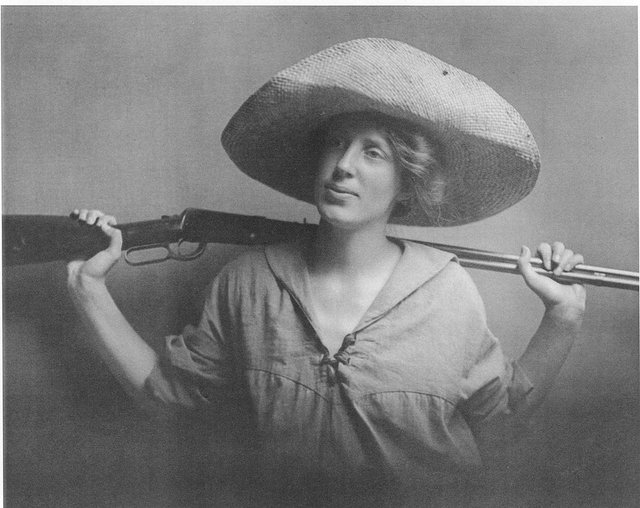
The first draft was written in November 1923. By June 1927, when a later draft of this chapter appeared in Eugene Jolas & Elliot Paul’s literary journal transition, Joyce had expanded it to nineteen lines. Note that there is still no paragraph break before the following section, which begins with O, by the by ...:
Now turn wheel again to the whole of the wall. There was once upon a wall and a hooghoog wall a was and such o wallhole did exist. A stonehinged gate then was for another thing while the suroptimist had bought and enlarged that shack under fair rental of one yearlyng sheep, (prime) value of sixpence, and one small yearlyng goat (cadet) value of eightpence, to grow old and happy (hogg it and kidd him) for the reminants of his years; and when everything was got up for the purpose he put a gate on the place by no means as some pretext a bedstead in loo thereof to keep out donkeys (the pigdirt hanging from the jags to this hour makes that clear) and just thenabouts the iron gape, by old custom left open to prevent the cats from getting at the gout, was triplepatlockt on him on purpose by his faithful poorters to keep him inside probably and possibly in case he felt like sticking out his chest too far and tempting gracious providence by a stroll on the nation’s eggday, unused as he was yet to being freely clodded. ―Jolas & Paul 46–47
When Joyce later revised this section he slightly elaborated what he had written and inserted half a dozen lines of new material before the mention of the stonehinged gate. As we shall see, this new material draws parallels between HCE’s current predicament and both his Oedipal Encounter with the Cad and his domestic relationship with his daughter, Issy.

Back to the Phoenix Park
The opening lines of this paragraph hark back to HCE’s encounter in the Phoenix Park with the Cad with a Pipe.
by memory inspired HCE’s current situation recalls his earlier one. One could say that the whole of Finnegans Wake is by memory inspired. This phrase is the title of an anonymous Irish ballad celebrating the heroes of several Irish rebellions and political movements. It was included in Padraic Colum’s Anthology of Irish Verse, which was published in 1922.
turn wheel again to the whole of the wall The Hole in the Wall was a nickname for the Black Horse Tavern, Nancy Hand’s pub on Blackhorse Avenue, Dublin. This public house was located next to a pedestrian turnstile in the outer wall of the Phoenix Park. The turning of the wheel has obvious Viconian connotations. The Battery at the Gate is another case of history repeating itself.

Gyant Blyant fronts Peannlueamoore In the Phoenix Park Encounter HCE was described as the flaxen Gygas when he was pointing at the Wellington Monument.
Greek: gigas, giant.
In Thomas Malory’s Le Morte d’Arthur Lancelot, having gone insane, is held captive for his own safety by Sir Blyaunte.
During the Cad Encounter the Wellington Monument was referred to as his duc de Fer’s overgrown milestone, but later, when this episode was being recounted to a namecousin of the late archdeacon F. X. Preserved Coppinger, it was called that overgrown leadpencil.
Irish: peann luaidhe mór, big lead pencil. I don’t understand the apparent allusion to Thomas Moore. The ballad By Memory Inspired is not one of his. Perhaps the writer George Moore is meant. Louis Mór is an Irish translation of the French: Louis le Grand, Louis XIV, but I don’t see the relevance.
Danish: blyant, pencil.
a garthen of Odin and the lost paladays when all the eddams ended with aves It need hardly be remarked that the Phoenix Park does duty as the Garden of Eden. HCE’s Crime in the Park is Finnegans Wake’s Original Sin. Note the allusions to John Milton’s Paradise Lost and to Adam and Eve. Odin and the Eddas add a Scandinavian dimension―always appropriate, considering that Dublin was originally a Norse settlement. John Gordon suggests an allusion also to the Paladins, the Twelve Peers of Charlemagne, who die heroically at the Pass of Roncevaux in the Chanson de Roland. Unlikely, but paladin does occur before the end of this chapter (RFW 059.11).
if he strikes a lousaforitch The Cad with a Pipe was called the luciferant, which not only identifies him with the Devil―the serpent in the Garden of Eden―but also refers to his striking a match to light his pipe.
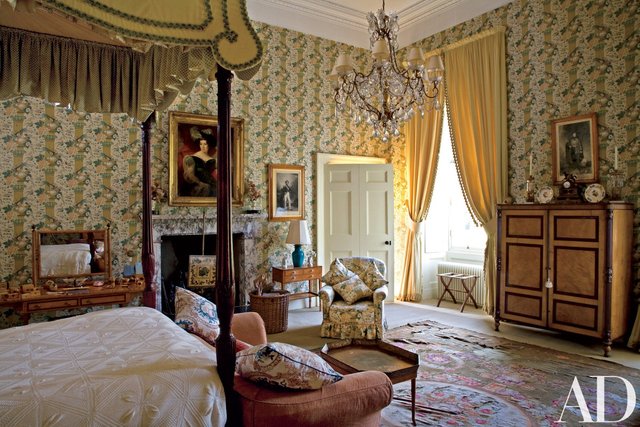
The Fireplace
It is surely significant that both the Cad with a Pipe and HCE’s daughter Issy are associated with fire. When HCE was a younger man, Issy slept in the room above the Mullingar House’s master bedroom. Whenever she talked in her sleep, her voice was transmitted down the chimney flue to invade the night thoughts of HCE―avoice from afire. As John Gordon notes, the first line of this paragraph alludes to the fireplace as the whole of the wall:
The ‛whole of the wall’ to which HCE now ‛turn[s]’ has a triple meaning at least: he is a dying man turning his face to the wall, the enamoured father/lover turning his attention to the fireplace hole in the wall from which Issy’s voice comes, and that fellow who some time ago roused himself to see to the hole punched in his wall by hail, tree, and wind, anthropomorphised as rock-throwing balladeers. ―Gordon 135
ore Danish: øre, ear.
Aaarlund Dutch: aar, ear (of corn, grain, etc).
The ear is the organ through which Issy poisons HCE’s mind. In Shakespeare’s Hamlet, Claudius assassinated Hamlet’s father by pouring poison into his ear as he slept.
- Isther Estarr play Yesther Asterr Jonathan Swift’s close friends Esther Johnson (Stella) and Esther Vanhomrigh (Vanessa) represent Issy in Finnegans Wake. In the present context, in which a gate is constructed and locked to keep HCE in and his enemies out, there may be an allusion to Babylon’s famous Ishtar Gate (see Finnegans, Wake!).
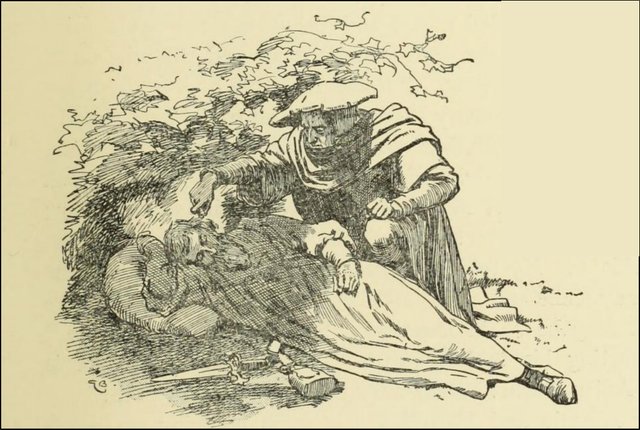
Armenia
This paragraph includes a foliation of Armenian terms. They are all to be found in half-a-dozen lines that Joyce added in 1938, about one year before the finished novel was published―Galleys 2nd set, May 1938, I.3 draft level 10, JJDA. Like all the other Armenian clusters in Finnegans Wake, Joyce flags this one by including a distortion of the word Armenian (here as Armen, which is also German for the poor):
Ere ore or ire in Aaarlund. Or you Dair’s Hair or you Diggin Mosses or your horde of orts and oriorts to garble a garthen of Odin and the lost paladays when all the eddams ended with aves. Armen. The doun is theirs and still to see for menags if he strikes a lousaforitch and we’ll come to those baregazed shoeshines if you just shoodov a second. And let oggs be good old goggles and Isther Estarr play Yesther Asterr. In the drema of Sorestost Areas, Diseased. ―RFW 055.21–28
ôre ôr, day by day
der, Mr, sir (form of address to secular clergy)
hayr, Father (form of address to regular clergy)
digin, Mrs
orti, son : young man
ôriort, young woman
doun, house
menag, solitary, alone
Lousavorich, Illuminator (title given to Saint Gregory, first patriarch of Armenia)
barekeadz, living a good life
shoushan, lily : Lily, Susan (girl’s name)
shoudov, hastily, quickly
ogi, spirit
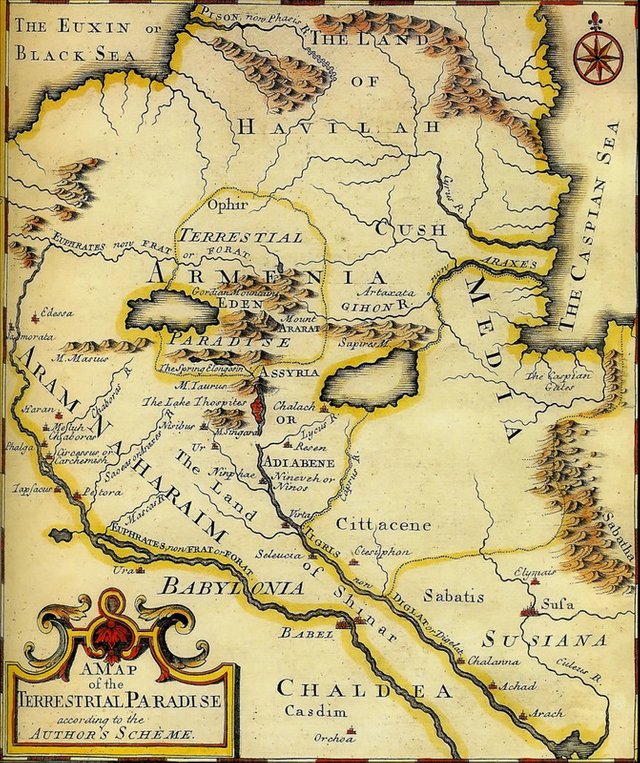
The Garden of Eden is traditionally located in Armenia, near the sources of the Tigris and Euphrates Rivers. It is hardly a coincidence that this foliation of Armenian words occurs in a passage that mentions the garthen of Odin, lost paladays, and eddams & aves. Most of the Armenian terms in Finnegans Wake are associated with the Garden of Eden (Halper 19–24).
Joyce’s spelling of these words in the Finnegans Wake notebooks appears to be phonetic, which suggests that his source was someone who spoke Armenian rather than a dictionary or other written text.
Some Loose Ends
And finally, let us tie up some loose ends.
There was once upon a wall and a hooghoog wall a was This clause echoes the opening line of Joyce’s A Portrait of the Artist as a Young Man: Once upon a time and a very good time it was ...
- Dutch: hoog, high
There was once upon a wall ... and let oggs be good old gaggles ... Estarr ... on the peoplade’s eggday The People’s Eggday is Easter Sunday, the Day of the Resurrection―with all its Viconian connotations―but the principle eggy allusion here is surely to Humpty Dumpty on his wall.
Old Irish: og, egg
French: peuplade, tribe, people
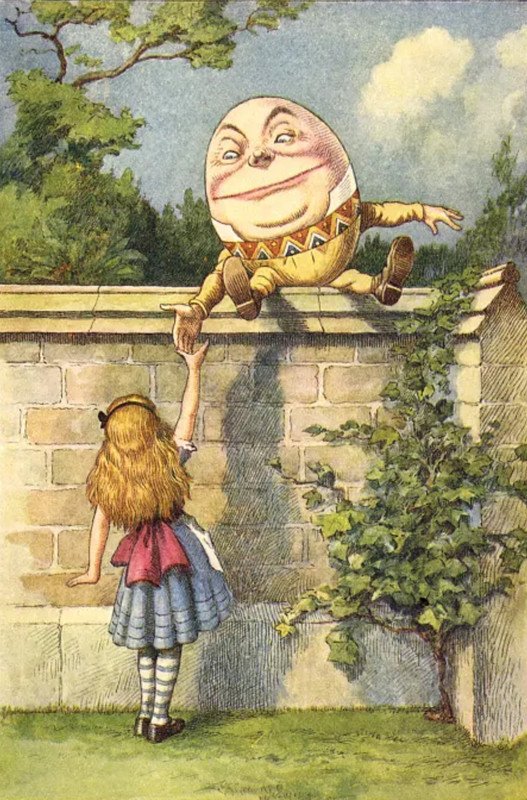
Sorestost Areas, Diseased Irish: Saorstát Éireann, Irish Free State. This was the official name of the 26-county state between 1922 and 1937, when Joyce was writing Finnegans Wake. Diseased possibly alludes to Hamlet’s There is something rotten in the state of Denmark.
he put an applegate on the place by no means as some pretend a bedstead The detail of the use of a bedstead―the framework that supports a bed―as a gate was taken from All on the Irish Shore: Irish Sketches by Somerville & Ross. This particular sketch, A Grand Filly, describes a foxhunt:
It was pretty to see the yellow horse jump. Nothing came amiss to him, and he didn’t seem able to make a mistake. There was a stone stile out of a bohireen that stopped every one, and he changed feet on the flag on top and went down by the steps on the other side. No one need believe this unless they like, but I saw him do it. The country boys were most exhilarating. How they got there I don’t know, but they seemed to spring up before us wherever we went. They cheered every jump, they pulled away the astounding obstacles that served as gates (such as the end of an iron bedstead, a broken harrow, or a couple of cartwheels), and their power of seeing the fox through a stone wall or a hill could only be equalled by the Röntgen rays. We fought our way through the oak wood, and out over a boggy bounds ditch into open country at last. ―Somerville & Ross 121
applegate The Forbidden Fruit in the Garden of Eden is traditionally identified as an apple.
the iron gape, by old custom left open to prevent the cat from getting at the gout Another borrowing from one of Joyce’s favourite newspapers, the Connacht Tribune:
House Burning ... Dead Goat Precautions. At Galway Quarter Sessions on Tuesday, before the Recorder, Judge Doyle, K.C., Mrs. H. Connelly, Moycullen, sought compensation for the destruction of a dwellinghouse and its contents ... The door of witness’s sister’s house had been hasped.
―“Why was it?” inquired the Recorder.
―Witness: We had killed a goat, and the door was hasped in order to prevent the cat getting at the goat (laughter). ―Connacht Tribune 16 February 1924 5/3
Rose & O’Hanlon believe that Joyce made the note door hasped to prevent the cat getting at goat (VI.B.1:1p), but when he later came to use this note he misread it as door open to prevent the cat getting at goat (JJDA). gape conveys the notions of both a barrier (gate) and a gaping hole.
by old custom left open A callback to the Prankquean Episode, which was based on an incident in the life of Grace O’Malley, the Pirate Queen. As a result of an altercation between her and the Earl of Howth, the doors of Howth Castle were by custom always left open at dinner time and an extra place was set at table (Gordon 69.24).
his faithful poorters The Four Old Men are also the four posts which support HCE’s four-poster bed and resemble the bars of a cage. In the opening chapter of the book they advise Tim Finnegan not to rise during his wake (RFW 019.24 ff). Later, they physically restrain him (Hold him there, Ezekiel Irons ... ―RFW 022.03), which may be echoed in iron gape. The Latin: porta, gate, door, is also present. In the context of Stonehenge (stonehinged), there may also be an echo of portal dolmen, an ancient Celtic tomb that resembles a stone doorway (to the afterlife?). Joyce visited Stonehenge in August 1931, during a brief trip to Salisbury (Ellmann 639 : Norburn 150). Megalithic monuments were once believed to be the graves of giants.
Significantly, Joyce uses Dutch words here―in Dutch means in trouble. This phrase has even been traced to the Irish word duais (also duabhais and duadhas), meaning toil, trouble, difficulty, labour (Cassidy 138 : Dineen 373).
- Dutch: poort, gate : poorters, citizens, burghers
And that’s as good a place as any to beach the bark of our tale.
References
- Joseph Campbell, Henry Morton Robinson, A Skeleton Key to Finnegans Wake, Harcourt, Brace and Company, New York (1944)
- Daniel Cassidy, How the Irish Invented Slang: The Secret Language of the Crossroads, CounterPunch, Petrolia, California (2007)
- Padraic Colum, Anthology of Irish Verse, Boni and Liveright, New York (1922)
- Patrick S Dinneen, An Irish-English Dictionary, New Edition, Revised and Greatly Enlarged, Irish Texts Society, Dublin (1927)
- Richard Ellmann, James Joyce, New and Revised Edition, Oxford University Press, Oxford (1982)
- John Gordon, Finnegans Wake: A Plot Summary, Syracuse University Press, Syracuse, New York (1986)
- Nathan Halper, Armenian, A Wake Newslitter, New Series, Volume 16, Number 2, Pages 19–24, University of Essex, English Department, Colchester (1979)
- David Hayman, A First-Draft Version of Finnegans Wake, University of Texas Press, Austin, Texas (1963)
- Eugene Jolas & Elliot Paul (editors), transition, Number 3, Shakespeare & Co, Paris (1927)
- James Joyce, A Portrait of the Artist as a Young Man, B W Huebsch, New York (1916)
- James Joyce, Finnegans Wake, The Viking Press, New York (1958, 1966)
- James Joyce, James Joyce: The Complete Works, Pynch (editor), Online (2013)
- Roger Norburn, A James Joyce Chronology, Palgrave Macmillan, London (2004)
- Danis Rose, John O’Hanlon, The Restored Finnegans Wake, Penguin Classics, London (2012)
- Edith Œnone Somerville & Martin Ross, All on the Irish Shore: Irish Sketches, Longmans, Green, and Co, London (1903)
Image Credits
- Ishtar Gate: Pergamon Museum, Berlin, © LBM1948 (photographer), Creative Commons License
- Stonehenge from the West-South-West: Richard Tongue (artist), British Museum, Public Domain
- Violet Richardson Ward, Founding President of the Soroptimist International: Anonymous Photograph, Public Domain
- The Wellington Monument: Detroit Photographic Company, Library of Congress, Washington, DC (1905), Public Domain
- Four-Poster Bed with Robert Adam Fireplace: Architectural Digest, © Condé Nast, New York, Fair Use
- The Hole in the Wall: © Dublin City Libraries, Creative Commons License
- The Murder of Hamlet’s Father: Gordon Browne (artist), Mary MacLeod, The Shakespeare Story-Book, A S Barnes & Co, New York (1902), Public Domain
- A Map of the Terrestrial Paradise: Emanuel Bowen (cartographer), Public Domain
- Humpty Dumpty: John Tenniel (artist), Lewis Carroll, Alice’s Adventures in Wonderland and Through the Looking-Glass & What Alice Found There, Macmilllan and Co, Limited, London (1911), Public Domain
Useful Resources
- FWEET
- Jorn Barger: Robotwisdom
- Joyce Tools
- The James Joyce Scholars’ Collection
- FinnegansWiki
- James Joyce Digital Archive
- John Gordon’s Finnegans Wake Blog
